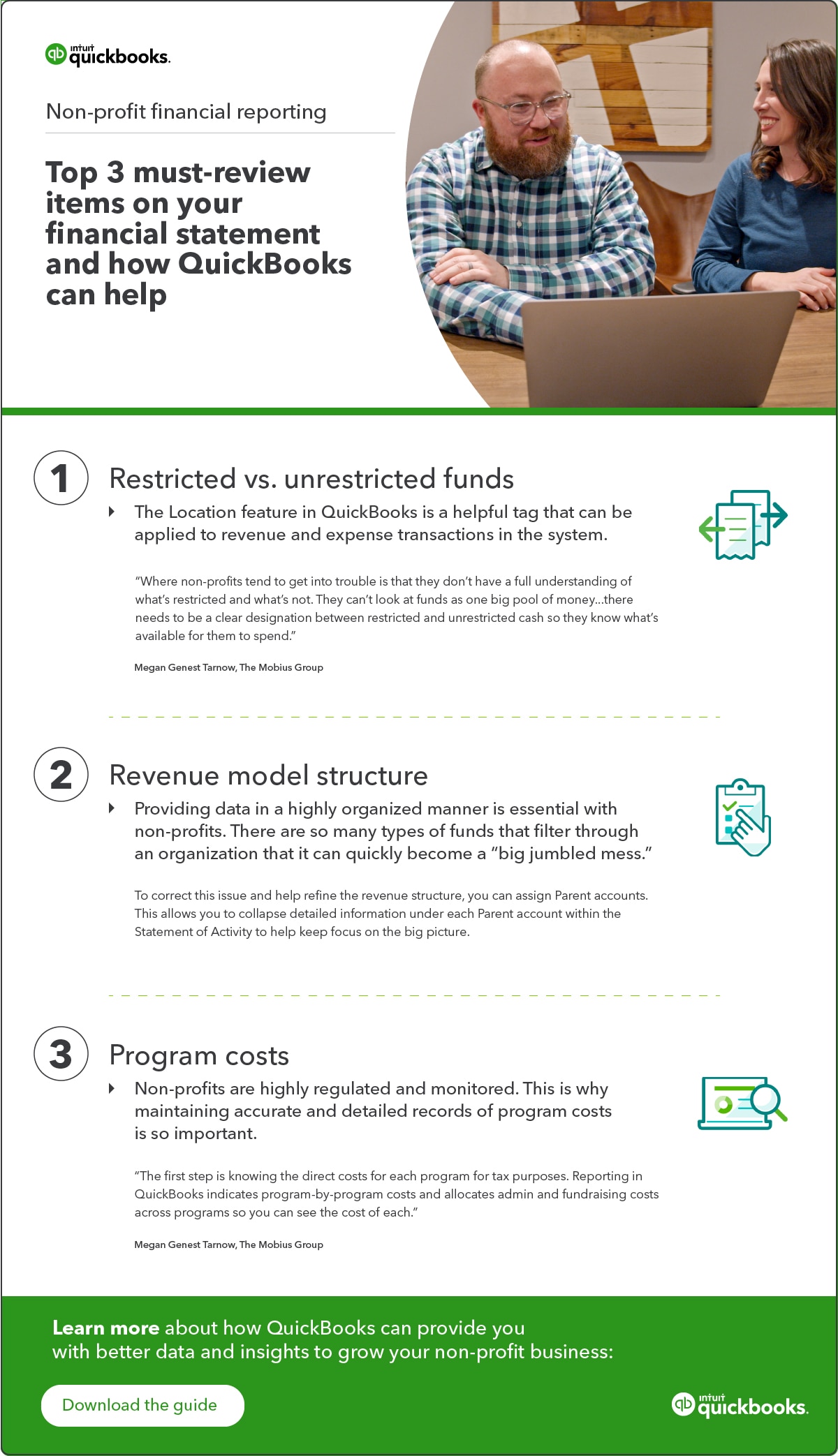Financial reporting is the lifeblood of nonprofit organizations. As an oversight-driven sector, nonprofits rely on accurate, timely financial information throughout the year. This information is presented to board members and finance committees and is needed to comply with federal regulations. It also ensures ample cash flow to support program services and long-term financial health.
Financial reports demonstrate your organization’s effectiveness in fulfilling its mission and handling revenue from donors, fundraising efforts, and government grants against associated program expenses.
Nonprofit groups understand the critical role financial reporting plays in communicating information to key constituents. Regular monthly reporting typically includes a statement of financial position (balance sheet), a statement of activities (profit and loss [P&L] and income statements), and other required reports. These reports collectively provide the financial insights your nonprofit needs to thrive.
Real-time information from financial reports arms your organization’s board of directors with the power to make sound business decisions and ensure the nonprofit’s viability and liquidity. Accurate reporting must also be maintained in the event of an audit.
Just like for-profit businesses, complete visibility of financial information at all times is necessary to make informed economic decisions and maintain strong cash inflow. A nonprofit’s purpose is to reinvest profits back into the programs and services they offer.















